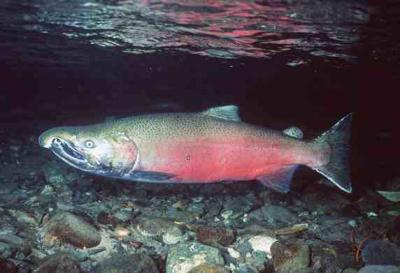
In 1983, Vaughn Taunton, Ray Osuna, and some volunteers started a salmon hatchery program. Salmon had scarcely been seen since the 1940s. In the early 1950s, slides covered the gravel beds where the salmon spawned, and the streams became practically barren. Taunton and Osuna were participants in STEP (the Salmon and Trout Enhancement Program). They owned eight hatch boxes, which they placed at the water treatment plant. Each box could hold 15,000-25,000 eggs. The first year they released 52,000 coho salmon fry. The next two years they released coho salmon, steelhead, and cutthroat trout. The allocation of eggs in 1985 was expected to be 120,000 coho. The fry were scooped into buckets and slipped into streams. Only Coho were released into Depoe Bay streams; Steelhead and Chinook were released in tributaries to the Siletz and Salmon Rivers. In 1984, a report of Taunton and Osuna’s endeavors was entered into the Congressional Record by Oregon Congressman Les AuCoin.
Taunton had strong feelings about the lack of restrictions for fishing on rivers and streams. He said:
Walking within a few feet of spawn beds will cause shock waves that can kill eggs close by. A chain reaction occurs in which eggs surrounding the dead eggs also die, and the infection spreads, causing the loss of many eggs. Fish are caught and then thrown back in a damaged state. These fish never spawn. A ‘black’ salmon, one which is either ready to spawn or else one which has just spawned, is not edible. Leave the fish alone and give them a chance to spawn! If you’re after conservation, close the streams for 60 days to allow escapement for coho and Chinook. At the end of this time, open the season to steelhead. Follow this program for four years and then review results.
One salmon, not able to make it upstream, was found dead on a rock. It was cut open and examined to see if it contained eggs. The fish was 25 inches long and weighed seven pounds. Its egg sac weighed one and one-quarter pounds and was estimated to contain 2,500 eggs. Multiply that by the number of fish in the rivers and streams that have been caught or damaged so they never spawn, and one can begin to realize the loss of future adult salmon unless fishing during peak spawning periods is restricted.
Thanks to the work of these men, Depoe Bay now has a strong program in place to support the hatching and releasing of salmon into the wild.
